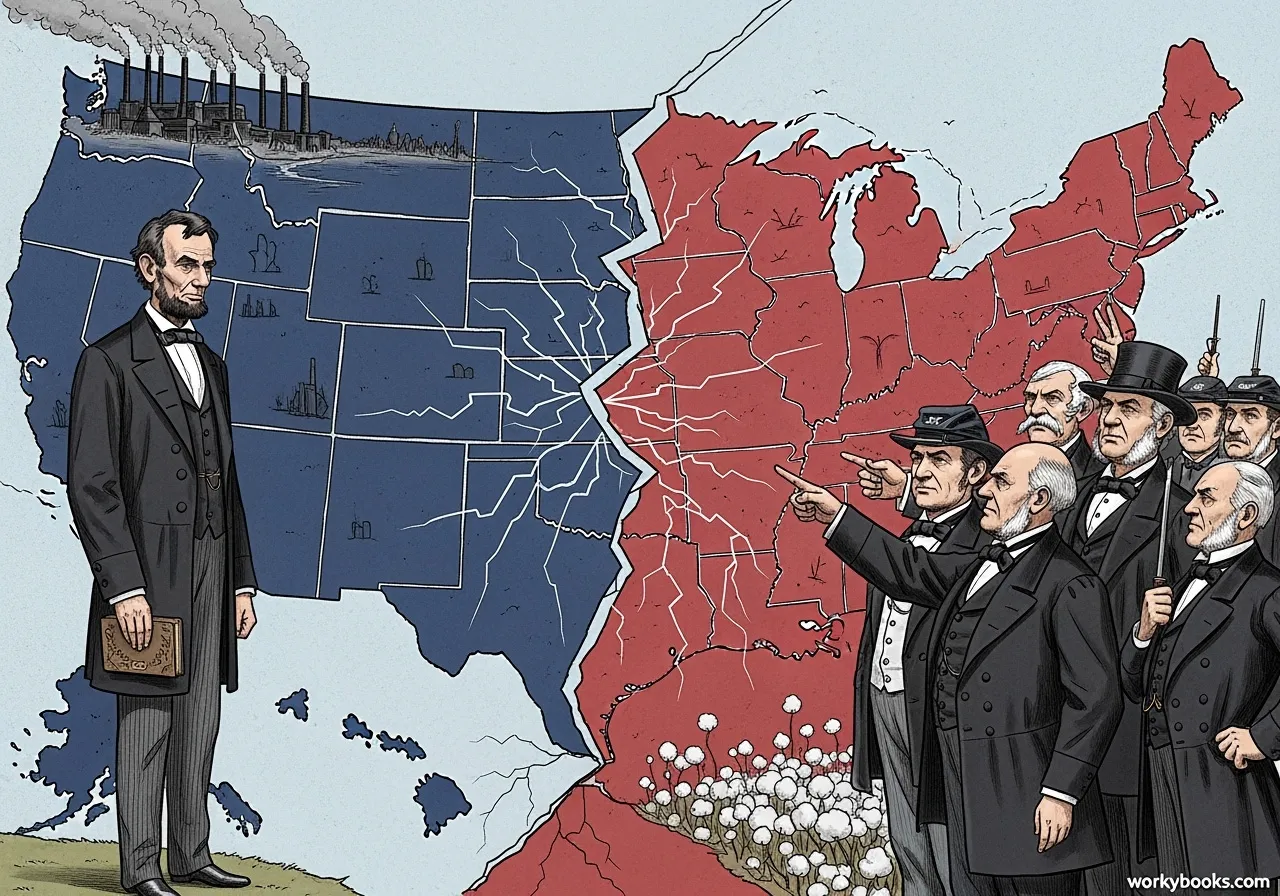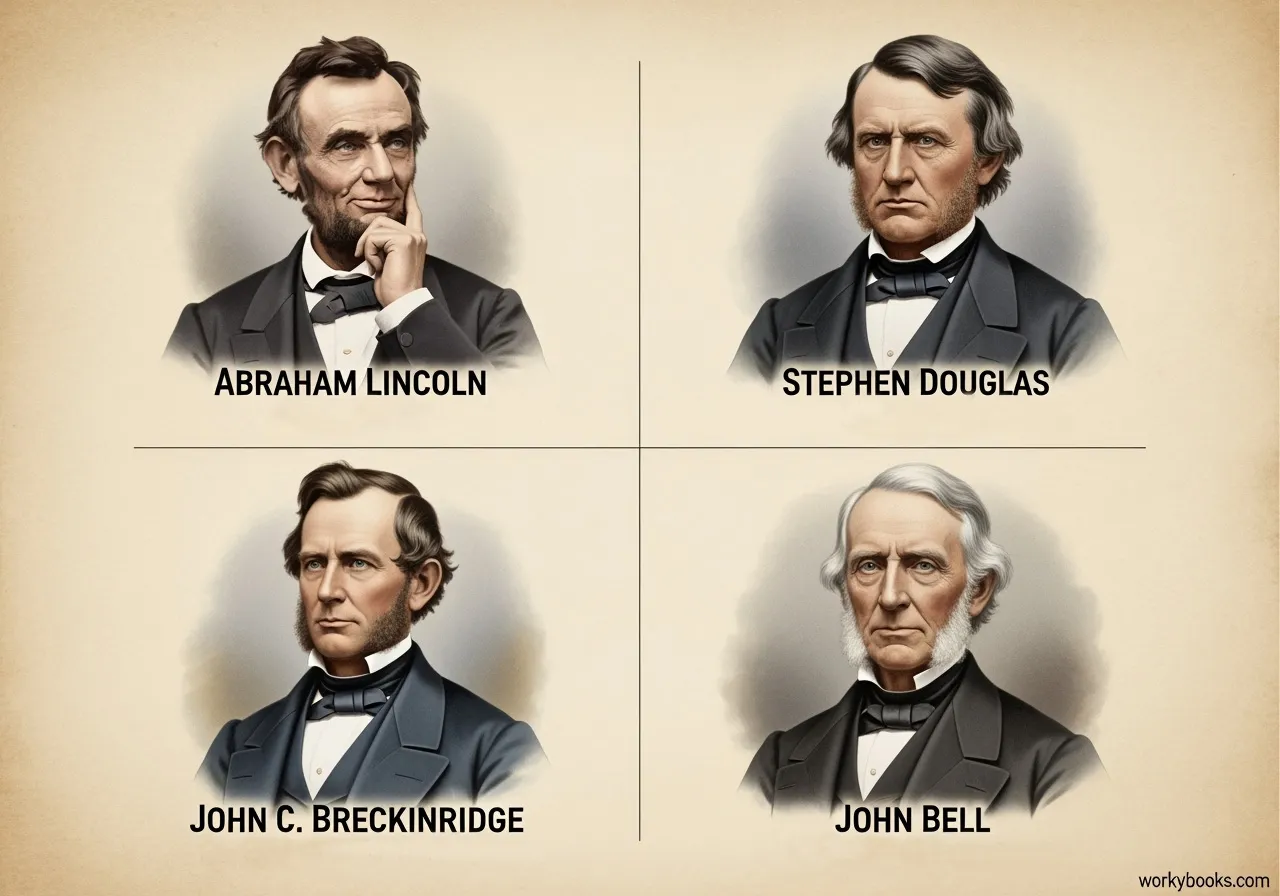Election of 1860
Discover how the presidential election of 1860 divided the nation and led to the Civil War!
What Was the Election of 1860?

The Election of 1860 was one of the most important presidential elections in American history. It happened at a time when the United States was deeply divided over the issue of slavery. The country was splitting between Northern states that opposed slavery and Southern states that supported it.
This election was so controversial that it led to the secession (withdrawal) of Southern states from the United States and eventually to the Civil War. The Republican candidate, Abraham Lincoln, won the election without receiving a single electoral vote from most Southern states.
Did You Know?
The Election of 1860 had the highest voter turnout in American history up to that point, with over 81% of eligible voters casting ballots!
The Candidates

The Election of 1860 was unusual because there were four main candidates from different political parties:
Abraham Lincoln
Republican Party - Opposed the expansion of slavery into new territories
Stephen Douglas
Northern Democrat - Supported popular sovereignty (letting territories decide)
John C. Breckinridge
Southern Democrat - Supported slavery in all territories
John Bell
Constitutional Union Party - Wanted to preserve the Union and avoid slavery debate
The Democratic Party had split into Northern and Southern factions over the slavery issue, which helped Abraham Lincoln win the election with only 40% of the popular vote.
The Slavery Debate

The central issue in the Election of 1860 was slavery, specifically whether slavery should be allowed to expand into new western territories. This debate had been growing for decades and divided the country along regional lines:
- Northern States: Mostly opposed slavery's expansion, with many wanting to contain it to where it already existed
- Southern States: Believed they had the right to bring enslaved people into new territories
- Border States: Were divided on the issue, with some supporting slavery and others opposing it
Abraham Lincoln and the Republican Party did not call for abolishing slavery where it already existed, but they strongly opposed its expansion into new territories. Southern states saw this as a threat to their way of life and economy, which depended on enslaved labor.
Outcome and Secession

When Abraham Lincoln won the election, Southern states reacted quickly. They believed a president who opposed slavery's expansion would eventually work to end slavery completely. This led to the secession crisis:
Lincoln Elected
Abraham Lincoln wins the presidency with 180 electoral votes
South Carolina Secedes
First state to leave the Union, followed by six others by February 1861
Confederate States Formed
Seven Southern states create the Confederate States of America
Civil War Begins
Confederate forces attack Fort Sumter, starting the Civil War
The Election of 1860 directly led to the secession of Southern states and the beginning of the Civil War, the deadliest conflict in American history.
Election of 1860 Quiz
Test your knowledge about the pivotal Election of 1860! Answer all 5 questions to see how much you've learned.
Frequently Asked Questions
Here are answers to common questions about the Election of 1860:
Election of 1860 Trivia
Discover amazing facts about the Election of 1860!
Lowest Popular Vote Winner
Abraham Lincoln won with only 40% of the popular vote - the lowest percentage of any winning presidential candidate in American history!
Silent Campaign
Lincoln gave no campaign speeches during the election. It was customary at the time for presidential candidates not to campaign actively for themselves.
Regional Results
Lincoln won every free state except New Jersey (which he split with Douglas). Breckinridge won most slave states, while Bell and Douglas won a few border states.
Quick Secession
South Carolina seceded just six weeks after Lincoln's election - on December 20, 1860 - before he had even taken office!


